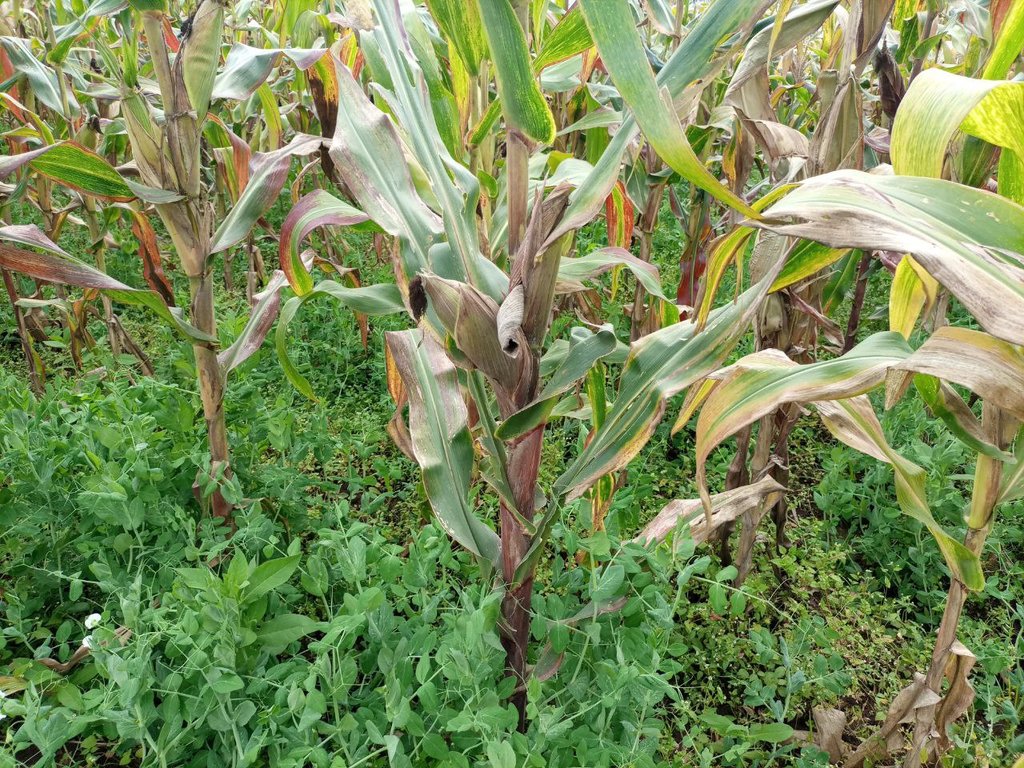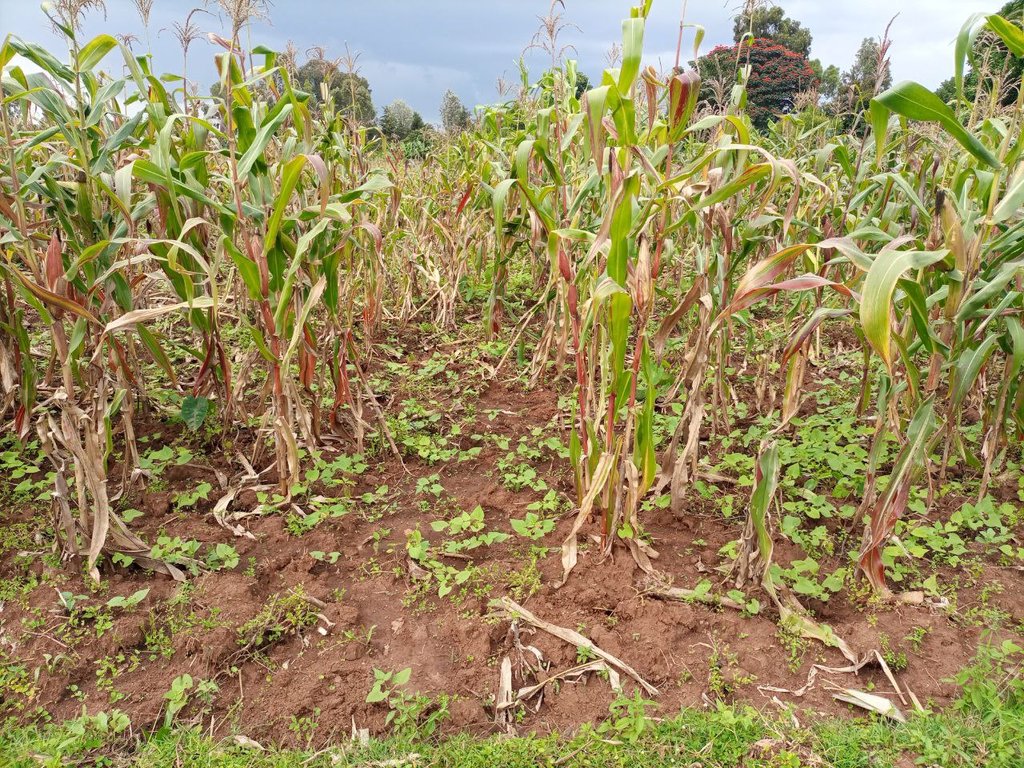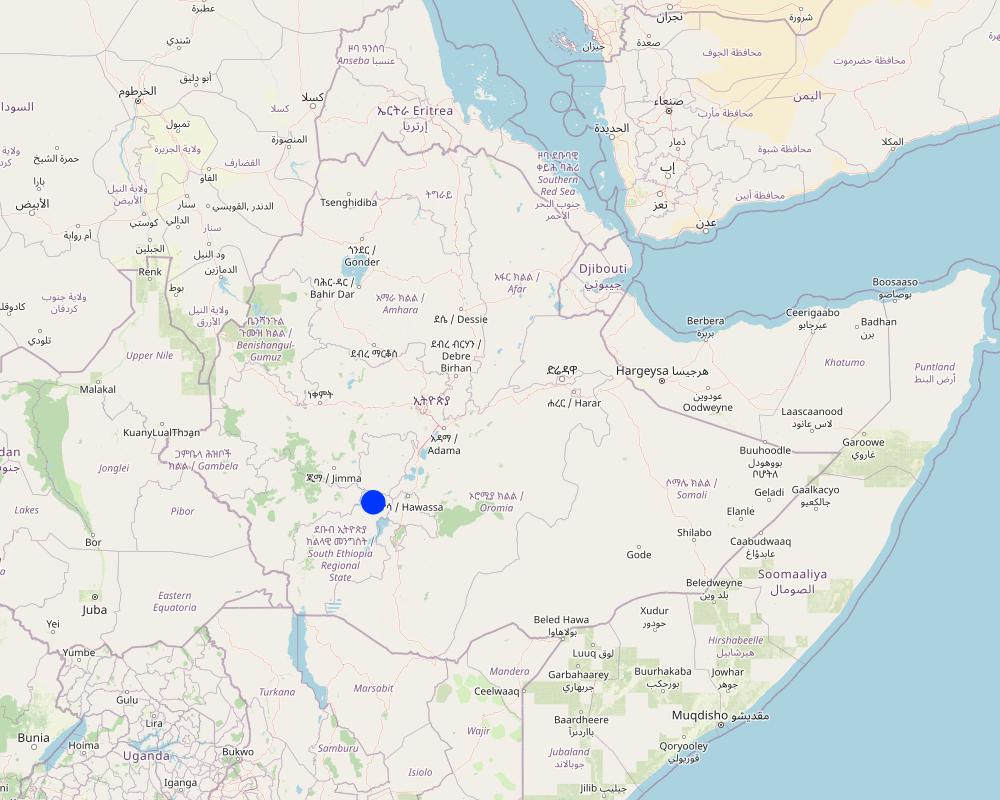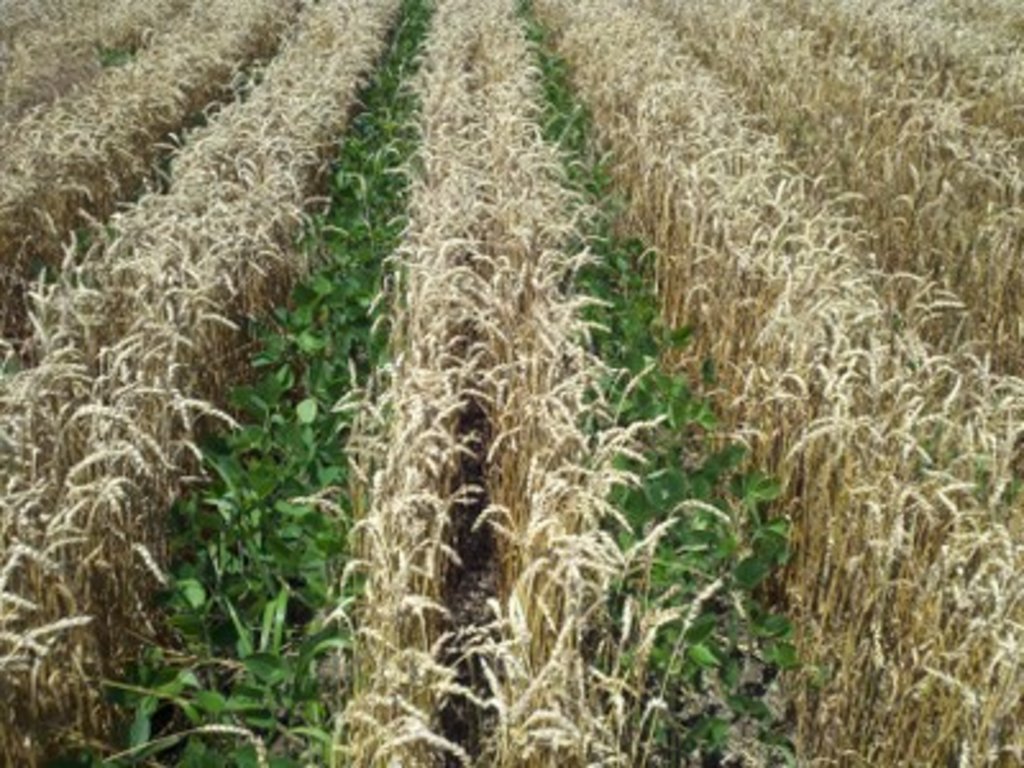Relay Intercropping [埃塞俄比亚]
- 创建:
- 更新:
- 编制者: GERBA LETA
- 编辑者: Julia Doldt, Kidist Yilma, Noel Templer, Tabitha Nekesa, Ahmadou Gaye, Siagbé Golli
- 审查者: William Critchley, Rima Mekdaschi Studer, Sally Bunning
Kurcheta
technologies_6630 - 埃塞俄比亚
查看章节
全部展开 全部收起1. 一般信息
1.2 参与该技术评估和文件编制的资源人员和机构的联系方式
关键资源人
土地使用者:
Sankura Goa
Farmer
埃塞俄比亚
有助于对技术进行记录/评估的项目名称(如相关)
Soil protection and rehabilitation for food security (ProSo(i)l)有助于对技术进行记录/评估的机构名称(如相关)
Alliance Bioversity and International Center for Tropical Agriculture (Alliance Bioversity-CIAT) - 肯尼亚1.3 关于使用通过WOCAT记录的数据的条件
编制者和关键资源人员接受有关使用通过WOCAT记录数据的条件。:
是
1.4 所述技术的可持续性声明
这里所描述的技术在土地退化方面是否存在问题,导致无法被认为是一种可持续的土地管理技术?:
否
注释:
Intercropping is friendly to the farm. It also increases the "land equivalent ratio" of a plot of land. However, farmers note that surface compaction can be a problem under relay intercropping - because of the frequent field operations required for each of the crops at different times.
1.5 参考关于SLM方法(使用WOCAT记录的SLM方法)的调查问卷
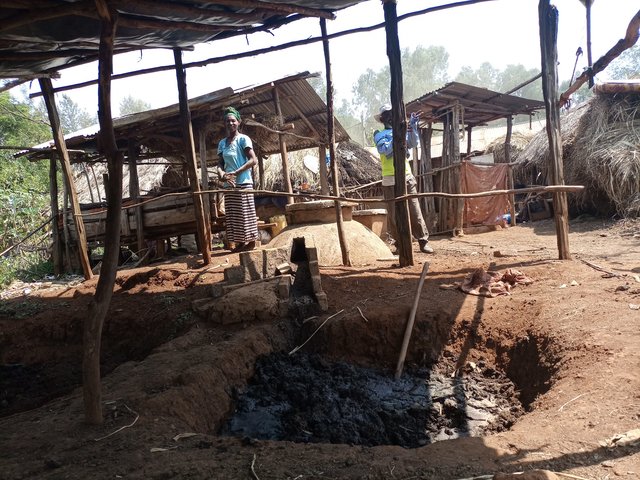
Integrated Soil Fertility Management (ISFM) [埃塞俄比亚]
The Integrated Soil Fertility Management (ISFM) approach has been adopted under the Integrated Soil Fertility Management Project (ISFM+). It was introduced as a quick-win solution to increase both crop and biomass production through the incremental promotion of varied but complementary technology packages.
- 编制者: GERBA LETA
2. SLM技术的说明
2.1 技术简介
技术定义:
Intercropping is the growing of two or more crops on the same piece of land at the same time or in temporal sequence. Relay intercropping usually involves planting a legume into an established cereal crop. This farming practice has multiple benefits and is a popular among smallholders in Wolaita zone of SNNPR.
2.2 技术的详细说明
说明:
Intercropping systems in Sodo Zuria of Waraza-Lasho kebele are characterized by relay intercropping. Under relay intercropping a second crop is planted alongside a growing crop, typically when it has reached its reproductive stage of growth. The practice enables efficient use of available space. In this kebele (lower administrative unit), field peas and haricot beans are commonly intercropped within maize. The seeds of these legumes are either sown in no particular pattern, or simply broadcast, under the main crop, maize. They are planted when the maize comes close to physiological maturity. Intercropping of cereals with legumes improves soil fertility through nitrogen fixation: this system extracts fewer nutrients from the soil than do monocrops. The practice also avoid risks of crop failure, improves effective use of available land, generates additional income and ensures food and nutrition security of the family farmers. Making the right choices about crops and timing of relay planting is crucial. Furthermore, good intercropping demands improved varieties of cereals and legumes. Adequate and timely labour is required also. Conventionally, the farmers till the land up to five times before planting the main crop. In relay intercropping further more land cultivation is essential to plant the companion crop.
Various researchers have reported considerably higher yields from intercropping compared with a pure stand. This can be measured through the “land equivalent ratio” which describes the relative land area required under sole cropping to produce the same yield as under intercropping. Intercropping has been regarded by many farmers as a technique that reduces risk in crop production. It improves carbon sequestration since it enhances biomass accumulation both above and below the surface of the soil. Intercropping is also a form of climate change adaptation strategy as it spreads risks and allows opportunistic use of extra moisture. However, relay intercropping can subject the land to compaction because the companion crops demand extra field operations. These include harvesting the main crops, or sometimes stripping the leaves to reduce the shading effects for the low growing companion crops. There is also extra labour required for weeding and harvesting of the intercrop.
2.3 技术照片
关于照片的一般说明:
The photo portrays relay intercropping whereby beans were planted late when the main crops nearly matured. The practice has an immense contribution to the family farmer not only in terms of improving soil fertility but also improving food and nutrition security of the family farmer.
2.4 技术视频
注释、简短说明:
Videos of the technology is not documented.
2.5 已应用该技术的、本评估所涵盖的国家/地区/地点
国家:
埃塞俄比亚
区域/州/省:
SNNPR
有关地点的进一步说明:
Sodo Zuria
具体说明该技术的分布:
- 均匀地分布在一个区域
如果不知道精确的区域,请注明大致覆盖的区域:
- 0.1-1 平方千米
技术现场是否位于永久保护区?:
否
Map
×2.6 实施日期
如果不知道确切的年份,请说明大概的日期:
- 50多年前(传统)
2.7 技术介绍
详细说明该技术是如何引入的:
- 作为传统系统的一部分(> 50 年)
- 通过项目/外部干预
- through agricultural extension system
注释(项目类型等):
Intercropping is a common practices since over 5 decades but the distribution limited to a few farmers. The agroecology project/ISFM+ intervention stimulated its pervasive implementation.
3. SLM技术的分类
3.1 该技术的主要目的
- 改良生产
- 保护生态系统
- 降低灾害风险
- 适应气候变化/极端天气及其影响
- 创造有益的经济影响
3.2 应用该技术的当前土地利用类型
同一土地单元内混合使用的土地::
是

农田
- 一年一作
年作 - 具体指明作物:
- 谷物类 - 玉米
- 豆科牧草和豆类 - 豆子
每年的生长季节数:
- 2
具体说明:
The area received Belg (short rain) and Meher (long rain with summer maximum).
采用间作制度了吗?:
是
采用轮作制度了吗?:
是
如果是,请具体说明:
Rotating cereal crops with root crops.
3.3 由于技术的实施,土地使用是否发生了变化?
由于技术的实施,土地使用是否发生了变化?:
- 否(继续问题3.4)
3.4 供水
该技术所应用土地的供水:
- 雨养
3.5 该技术所属的SLM组
- 轮作制度(轮作、休耕、轮垦)
- 农畜综合管理
- 土壤肥力综合管理
3.6 包含该技术的可持续土地管理措施

农艺措施
- A2:有机质/土壤肥力
- A5:种子管理,改良品种
- A6:残株管理
A6:对残株管理作出具体说明:
A 6.3:收集

管理措施
- M5:物种组成的控制/变化
- M6:废物管理(回收、再利用或减少)
3.7 该技术强调的主要土地退化类型

土壤水蚀
- Wt:表土流失/地表侵蚀

化学性土壤退化
- Cn:肥力下降和有机质含量下降(非侵蚀所致)

生物性退化
- Bc:植被覆盖的减少
- Bl:土壤寿命损失
3.8 防止、减少或恢复土地退化
具体数量名该技术与土地退化有关的目标:
- 减少土地退化
- 修复/恢复严重退化的土地
4. 技术规范、实施活动、投入和成本
4.1 该技术的技术图纸
技术规范(与技术图纸相关):
Soybean intercropped with wheat. Adopted from https://www.no-tillfarmer.com/articles/4084-lessons-learned-from-2014-modified-relay-intercropping.
作者:
Ohio State University
4.2 有关投入和成本计算的一般信息
具体说明成本和投入是如何计算的:
- 每个技术区域
注明尺寸和面积单位:
4 Timad
如果使用本地面积单位,注明转换系数为1公顷(例如1公顷=2.47英亩):1公顷=:
4 Timad = 1ha
其它/国家货币(具体说明):
Ethiopia Birr (ETB)
如相关,注明美元与当地货币的汇率(例如1美元=79.9巴西雷亚尔):1美元=:
53.6283
注明雇用劳工的每日平均工资成本:
400
4.3 技术建立活动
注释:
We consider documentation of maintenance costs only to put in place the companion crops.
4.4 技术建立所需要的费用和投入
注释:
As we opt to focus on the maintenance cost of the relay intercropping, establishment cost is intentionally skipped.
4.5 维护/经常性活动
| 活动 | 时间/频率 | |
|---|---|---|
| 1. | Land preparation | Before and during planting of companion crop. |
| 2. | Planting | During the long rain for associated crop. |
| 3. | Weeding | Three weeks after emergency of companion crops seedling onwards. |
| 4. | Harvesting | At the end of harvest season. |
4.6 维护/经常性活动所需要的费用和投入(每年)
| 对投入进行具体说明 | 单位 | 数量 | 单位成本 | 每项投入的总成本 | 土地使用者承担的成本% | |
|---|---|---|---|---|---|---|
| 劳动力 | Land preparation | PDs | 8.0 | 400.0 | 3200.0 | 100.0 |
| 劳动力 | Planting | PDs | 4.0 | 400.0 | 1600.0 | 100.0 |
| 劳动力 | Weeding | PDs | 8.0 | 100.0 | 800.0 | 100.0 |
| 劳动力 | Harvesting | PDs | 8.0 | 100.0 | 800.0 | 100.0 |
| 植物材料 | Haricot beans/field peas seeds | kg | 40.0 | 60.0 | 2400.0 | 100.0 |
| 肥料和杀菌剂 | NSP fertilizer | kg | 50.0 | 45.0 | 2250.0 | 100.0 |
| 技术维护所需总成本 | 11050.0 | |||||
| 技术维护总成本,美元 | 206.05 | |||||
注释:
Almost all labor cost, seed and other inputs are covered by land users for maintaining the technology.
4.7 影响成本的最重要因素
描述影响成本的最决定性因素:
Usually, the cost is influenced by the economic crisis and high inflation rate experienced in the last few years in Ethiopia. It is also related to global fuel and fertilizer prices as well as other crises which are the potential causes.
5. 自然和人文环境
5.1 气候
年降雨量
- < 250毫米
- 251-500毫米
- 501-750毫米
- 751-1,000毫米
- 1,001-1,500毫米
- 1,501-2,000毫米
- 2,001-3,000毫米
- 3,001-4,000毫米
- > 4,000毫米
指定年平均降雨量(若已知),单位为mm:
1452.00
有关降雨的规范/注释:
Bimodal rainfall is intercepted in the area with a summer maximum from June to September.
注明所考虑的参考气象站名称:
Sodo Center Meteorology
农业气候带
- 半湿润
High temperature is experienced from December to February.
5.2 地形
平均坡度:
- 水平(0-2%)
- 缓降(3-5%)
- 平缓(6-10%)
- 滚坡(11-15%)
- 崎岖(16-30%)
- 陡峭(31-60%)
- 非常陡峭(>60%)
地形:
- 高原/平原
- 山脊
- 山坡
- 山地斜坡
- 麓坡
- 谷底
垂直分布带:
- 0-100 m a.s.l.
- 101-500 m a.s.l.
- 501-1,000 m a.s.l.
- 1,001-1,500 m a.s.l.
- 1,501-2,000 m a.s.l.
- 2,001-2,500 m a.s.l.
- 2,501-3,000 m a.s.l.
- 3,001-4,000 m a.s.l.
- > 4,000 m a.s.l.
说明该技术是否专门应用于:
- 不相关
关于地形的注释和进一步规范:
The altitude of the place is 1,940 m above sea level.
5.3 土壤
平均土层深度:
- 非常浅(0-20厘米)
- 浅(21-50厘米)
- 中等深度(51-80厘米)
- 深(81-120厘米)
- 非常深(> 120厘米)
土壤质地(表土):
- 中粒(壤土、粉土)
土壤质地(地表以下> 20厘米):
- 中粒(壤土、粉土)
表土有机质:
- 中(1-3%)
如有可能,附上完整的土壤描述或具体说明可用的信息,例如土壤类型、土壤酸碱度、阳离子交换能力、氮、盐度等。:
The SLM experts describe the soil texture as clay loam.
5.4 水资源可用性和质量
地下水位表:
5-50米
地表水的可用性:
好
水质(未处理):
不良饮用水(需要处理)
水质请参考::
地下水
水的盐度有问题吗?:
否
该区域正在发生洪水吗?:
否
5.5 生物多样性
物种多样性:
- 高
栖息地多样性:
- 低
5.6 应用该技术的土地使用者的特征
定栖或游牧:
- 定栖的
生产系统的市场定位:
- 混合(生计/商业)
非农收入:
- 低于全部收入的10%
相对财富水平:
- 丰富
个人或集体:
- 个人/家庭
机械化水平:
- 手工作业
性别:
- 男人
土地使用者的年龄:
- 老年人
说明土地使用者的其他有关特征:
The farmer piloted conservation agriculture practices. Also, the land users plant woodlots around the periphery of his farmland.
5.7 应用该技术的土地使用者使用的平均土地面积
- < 0.5 公顷
- 0.5-1 公顷
- 1-2 公顷
- 2-5公顷
- 5-15公顷
- 15-50公顷
- 50-100公顷
- 100-500公顷
- 500-1,000公顷
- 1,000-10,000公顷
- > 10,000公顷
这被认为是小规模、中规模还是大规模的(参照当地实际情况)?:
- 小规模的
注释:
Land users owns 3.5 hectares of land.
5.8 土地所有权、土地使用权和水使用权
土地所有权:
- 州
- 个人,有命名
土地使用权:
- 个人
用水权:
- 自由进入(无组织)
土地使用权是否基于传统的法律制度?:
是
具体说明:
The land is inherited from the family line but aligned with the constitution adopted by the government that guaranty usufructs to the land.
5.9 进入服务和基础设施的通道
健康:
- 贫瘠
- 适度的
- 好
教育:
- 贫瘠
- 适度的
- 好
技术援助:
- 贫瘠
- 适度的
- 好
就业(例如非农):
- 贫瘠
- 适度的
- 好
市场:
- 贫瘠
- 适度的
- 好
能源:
- 贫瘠
- 适度的
- 好
道路和交通:
- 贫瘠
- 适度的
- 好
饮用水和卫生设施:
- 贫瘠
- 适度的
- 好
金融服务:
- 贫瘠
- 适度的
- 好
注释:
There is a high unemployment rate. Of course, the area is highly populated. As the site is located closer to the zonal capital they have good financial services particularly access to Bank services such as for saving.
6. 影响和结论性说明
6.1 该技术的现场影响
社会经济效应
生产
作物生产
注释/具体说明:
Increases as the technology best use the available space and surplus moisture in the soil system.
作物质量
注释/具体说明:
Increases as the arrangement allows the relay crop to enjoy the space and available residual nutrients at disposal.
产品多样性
注释/具体说明:
Relay intercropping increases the number of crops harvested per unit of land in one season.
生产区域
土地管理
注释/具体说明:
Combining cereal with legumes improves land management by increasing biomass production and combining cereal with nitrogen-fixing legumes that contribute to land management.
水资源可用性和质量
饮用水的可用性
饮用水的质量
收入和成本
农业收入
注释/具体说明:
Combining two different types of crop on a farm diversify farm income.
收入来源的多样性
经济差异
工作量
注释/具体说明:
Workload increases as it demands additional labor for land preparation, planting, weeding, and harvesting two crops grown in temporal sequences.
社会文化影响
食品安全/自给自足
注释/具体说明:
Relay intercropping allows ensuring the food and nutrition security of family farmers.
健康状况
SLM/土地退化知识
生态影响
水循环/径流
水量
水质
土壤
土壤水分
注释/具体说明:
Soil moisture can exhaustively be used by the companion crop.
土壤覆盖层
土壤流失
土壤压实
注释/具体说明:
Frequent farm operation for two different crops increases the pressure that leads to soil compaction.
养分循环/补给
生物多样性:植被、动物
植被覆盖
生物量/地上C
植物多样性
减少气候和灾害风险
干旱影响
碳和温室气体的排放
注释/具体说明:
Ground cover by two different crops on a temporal basis increases the absorption and storage of carbon.
微气候
6.2 该技术的场外影响已经显现
水资源可用性
注释/具体说明:
No actual data to forecast the potential off-site impacts.
旱季稳定可靠的水流
温室气体的影响
注释/具体说明:
Land covered by crops for extended part of a season contributes to carbon sequestration and reduction of greenhouse gases.
6.3 技术对渐变气候以及与气候相关的极端情况/灾害的暴露和敏感性(土地使用者认为的极端情况/灾害)
渐变气候
渐变气候
| 季节 | 增加或减少 | 该技术是如何应对的? | |
|---|---|---|---|
| 年温度 | 增加 | 适度 | |
| 年降雨量 | 减少 | 不好 |
6.4 成本效益分析
技术收益与技术维护成本/经常性成本相比如何(从土地使用者的角度看)?
短期回报:
积极
长期回报:
非常积极
注释:
Maintenance cost for intercropping limited largely to labor and agricultural inputs such as seed and fertilizers.
6.5 技术采用
- 1-10%
在所有采用这项技术的人当中,有多少人是自发的,即未获得任何物质奖励/付款?:
- 0-10%
注释:
About 6% of land users adopted the technology on their own motivation.
6.6 适应
最近是否对该技术进行了修改以适应不断变化的条件?:
否
6.7 该技术的优点/长处/机会
| 土地使用者眼中的长处/优势/机会 |
|---|
| Improve family farmers diet from the perspective of food and nutrition security. |
| Generate income from the sale of companion legume crops. |
| Improve soil fertility and management of the land |
| 编制者或其他关键资源人员认为的长处/优势/机会 |
|---|
| Improve effective resource utilization such as land, labor, and inputs. |
| Insure against total crop failure under unfavorable weather conditions, and pest outbreaks. |
| Improve and maintain soil fertility as the combination is mostly cereal with legumes. |
| Increase total biomass and crop production per unit of land. |
| Pest levels are often lowered in intercrops, as the diversity of plants hampers the movement of certain pest insects and in some cases encourages beneficial insect populations. |
| Reduce soil erosion, lower soil surface evaporation & reduce weed infestation. |
6.8 技术的弱点/缺点/风险及其克服方法
| 土地使用者认为的弱点/缺点/风险 | 如何克服它们? |
|---|---|
| Demand more labor. | Overlay planting season, and promote row intercropping to simplify the management practices. |
| Relay intercropping triggers soil compaction, | Promote row intercropping for effective utilization of space and reduction of soil compaction. |
| Shortage of best fitting varieties of legume crops for relay intercropping. | Facilitate and improve land users access to suitable companion crops from the nearby research institutes. |
| 编制者或其他关键资源人员认为的弱点/缺点/风险 | 如何克服它们? |
|---|---|
| It is time-consuming as it requires more attention and thus increases intensive management. | Promote row intercropping and overlay planting season to avoid giving separate management practices. |
| There is reduced efficiency in planting, weeding and harvesting which may add to the labor costs of these operations, especially if the practice is at a larger scale. | Plant the main and companion crops simultaneously and apply optimum management practices. |
7. 参考和链接
7.1 信息的方法/来源
- 实地考察、实地调查
Five persons.
- 与土地使用者的访谈
Only the land user.
- 与SLM专业人员/专家的访谈
Three experts.
(现场)数据是什么时候汇编的?:
17/01/2023
7.2 参考可用出版物
标题、作者、年份、ISBN:
Guidelines for Intercropping. Mohler, C. L. and Stoner, K. A. 2009.
可以从哪里获得?成本如何?
EBook for $24 (https://www.sare.org/publications/crop-rotation-on-organic-farms/guidelines-for-intercropping/)
标题、作者、年份、ISBN:
Raza, M.A. et al. 2019. Growth and development of soybean under changing light environments in relay intercropping system. DOI: 10.7717/Peerji.7262.
可以从哪里获得?成本如何?
Free online from Research gate
7.3 链接到网络上的相关信息
标题/说明:
Intercropping: What it is, what it isn't and why we do it.
URL:
https://www.permaculturenews.or/2016/08/12
标题/说明:
Intercropping Agriculture System
URL:
https://fscluster.org/gaziantep
标题/说明:
Intercropping: Ergonomic and Efficient Farming
URL:
https://eos.com/blog/intercropping/
7.4 一般注释
Specifications under 3.6 such as tillage system, and reside management are not well aligned with the pdf version. So, it is difficult to make choices.
链接和模块
全部展开 全部收起链接

Integrated Soil Fertility Management (ISFM) [埃塞俄比亚]
The Integrated Soil Fertility Management (ISFM) approach has been adopted under the Integrated Soil Fertility Management Project (ISFM+). It was introduced as a quick-win solution to increase both crop and biomass production through the incremental promotion of varied but complementary technology packages.
- 编制者: GERBA LETA
模块
无模块



